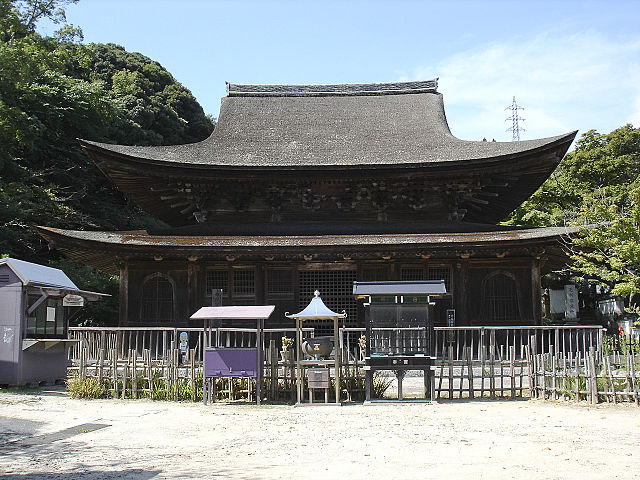Zenshūyō is a Japanese Buddhist architectural style derived from Chinese Song Dynasty architecture. Named after the Zen sect of Buddhism which brought it to Japan, it emerged in the late 12th or early 13th century. Together with Wayō and Daibutsuyō, it is one of the three most significant styles developed by Japanese Buddhism on the basis of Chinese models. Until World War II, this style was called karayō but, like the Daibutsuyō style, it was re-christened by Ōta Hirotarō, a 20th-century scholar. Its most typical features are a more or less linear layout of the garan, paneled doors hanging from hinges, intercolumnar tokyō, cusped windows, tail rafters, ornaments called kibana, and decorative pent roofs.
Kōzan-ji's butsuden in Shimonoseki
A Zen cusped window
A typical Zen main hall
Zen sanmon (Tōfuku-ji)
Japanese Buddhist architecture
Japanese Buddhist architecture is the architecture of Buddhist temples in Japan, consisting of locally developed variants of architectural styles born in China. After Buddhism arrived from the continent via the Three Kingdoms of Korea in the 6th century, an effort was initially made to reproduce the original buildings as faithfully as possible, but gradually local versions of continental styles were developed both to meet Japanese tastes and to solve problems posed by local weather, which is more rainy and humid than in China. The first Buddhist sects were Nara's six Nanto Rokushū , followed during the Heian period by Kyoto's Shingon and Tendai. Later, during the Kamakura period, in Kamakura were born the Jōdo and the native Japanese sect Nichiren-shū. At roughly the same time, Zen Buddhism arrived from China, strongly influencing all other sects in many ways, including in architecture. The social composition of Buddhism's followers also changed radically with time. Beginning as an elite religion, it slowly spread from the nobility to warriors and merchants, and finally to the population at large. On the technical side, new woodworking tools like the framed pit saw and the plane allowed new architectural solutions.

The roof is the dominant feature of a Buddhist temple.
A reconstruction of Asuka-dera's original layout
Part of Tōshōdai-ji's garan (left to right, the kon-dō, the kō-dō, and the korō)
Usa Hachiman-gū is now a Shinto shrine, but used to be also a temple








